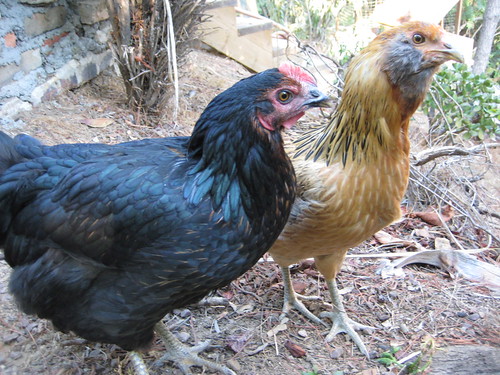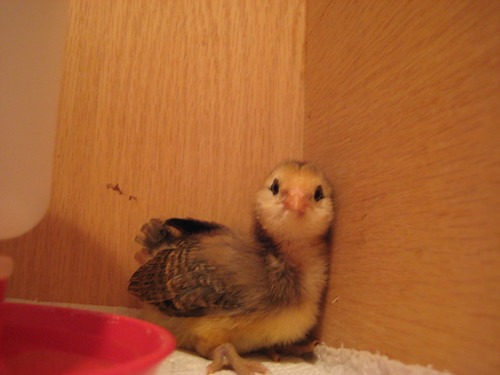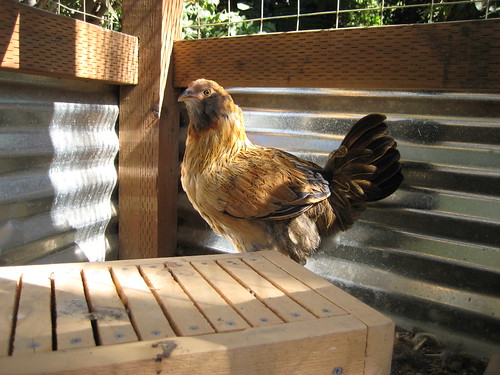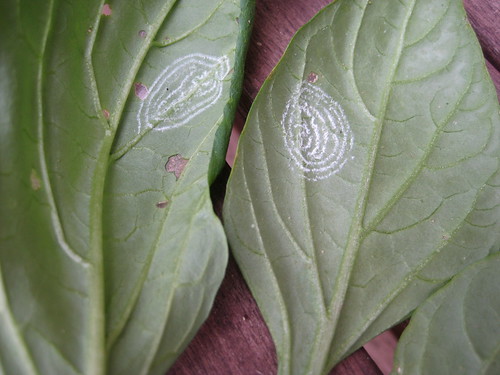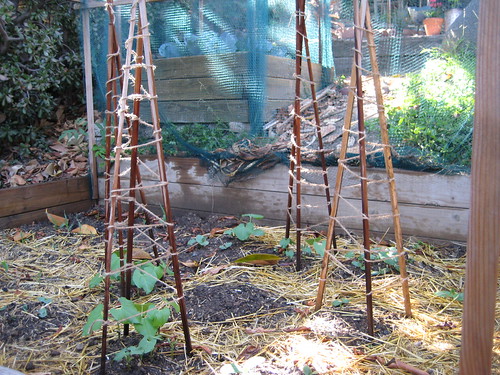It's almost always a bad idea to chase an uncooperative hen, particularly for me, since my backyard is on a hillside. I'm more likely to fall on my butt than I am to actually nab one of my hens. But I don't want to have to keep the girls cooped up because they can't be trusted to return to the safety of their fenced-in run when I need to go to work. Luckily, I have come up with a new technique to herd them that I wanted to share.

All you need to execute my newly discovered Hose Technique (patent pending) is a good, long outdoor house and a spray nozzle. With these tools, you too can herd your hens right back into their run in a manner of minutes. Here's how it works:
Stand in a location that allows you to see your chickens and their run. Then, start spraying short bursts of water behind them. This will startle them a bit, but it won't hurt them, even if you accidentally hit them in the butt with a little water. Basically, the water will annoy them, so they'll run in the other direction. Using their desire to avoid getting wet, you can herd the hens with water the way a dog would herd sheep. It takes a little practice, but it works really well for me, because I can spray a stream of water much more quickly than I can run back and forth shooing my hens.
In fact, now that I've used Hose Technique a couple of times, my hens start to head back towards their run as soon as the first spray hits nearby. They know that as soon as they get in the run, that weird water will stop showing up.
I know some folks may not enjoy startling their pet chickens, and this technique is not for everyone. But for me, if it's a choice between very rarely letting my girls free range and using the Hose Technique, the hose wins.

